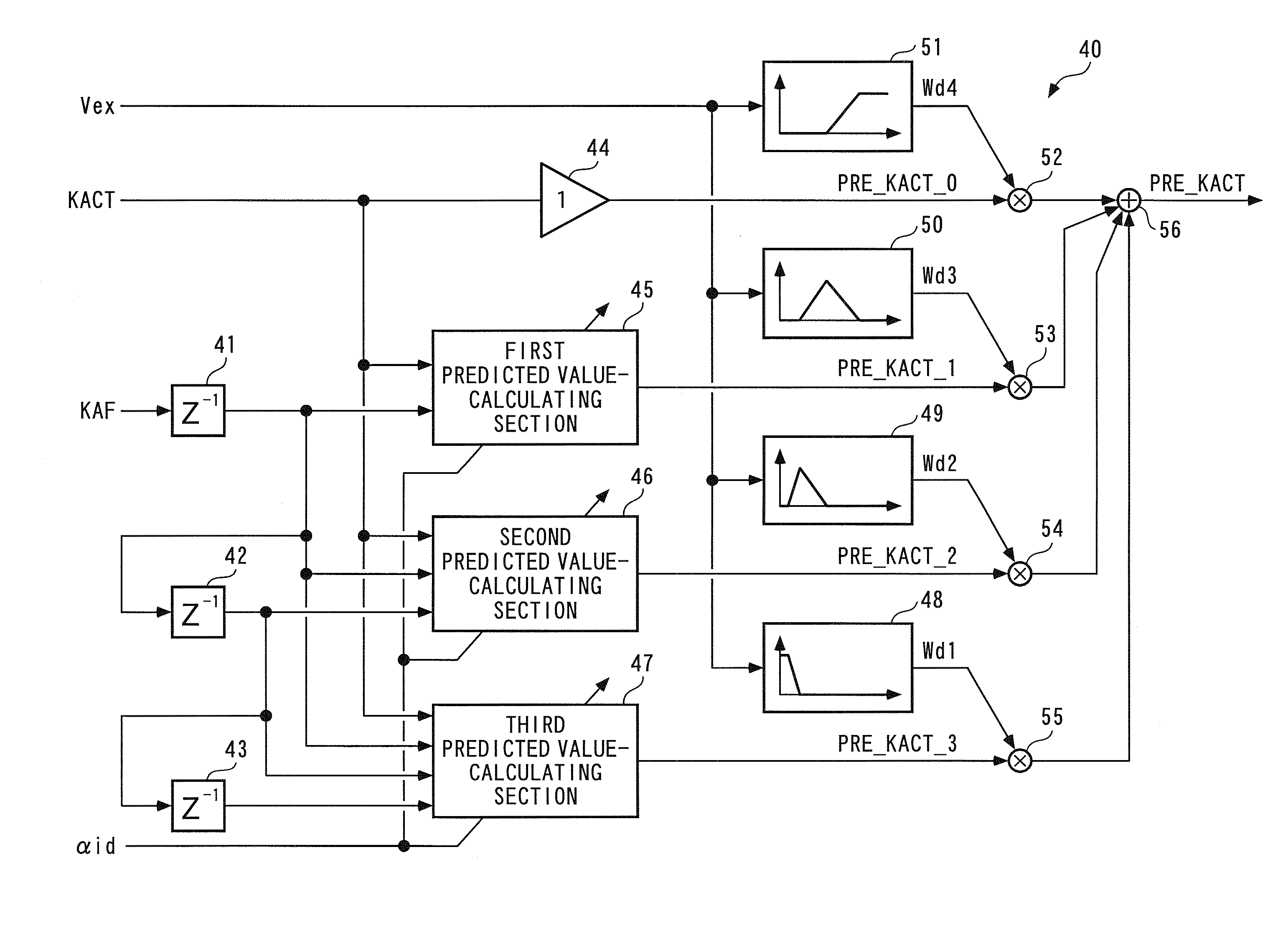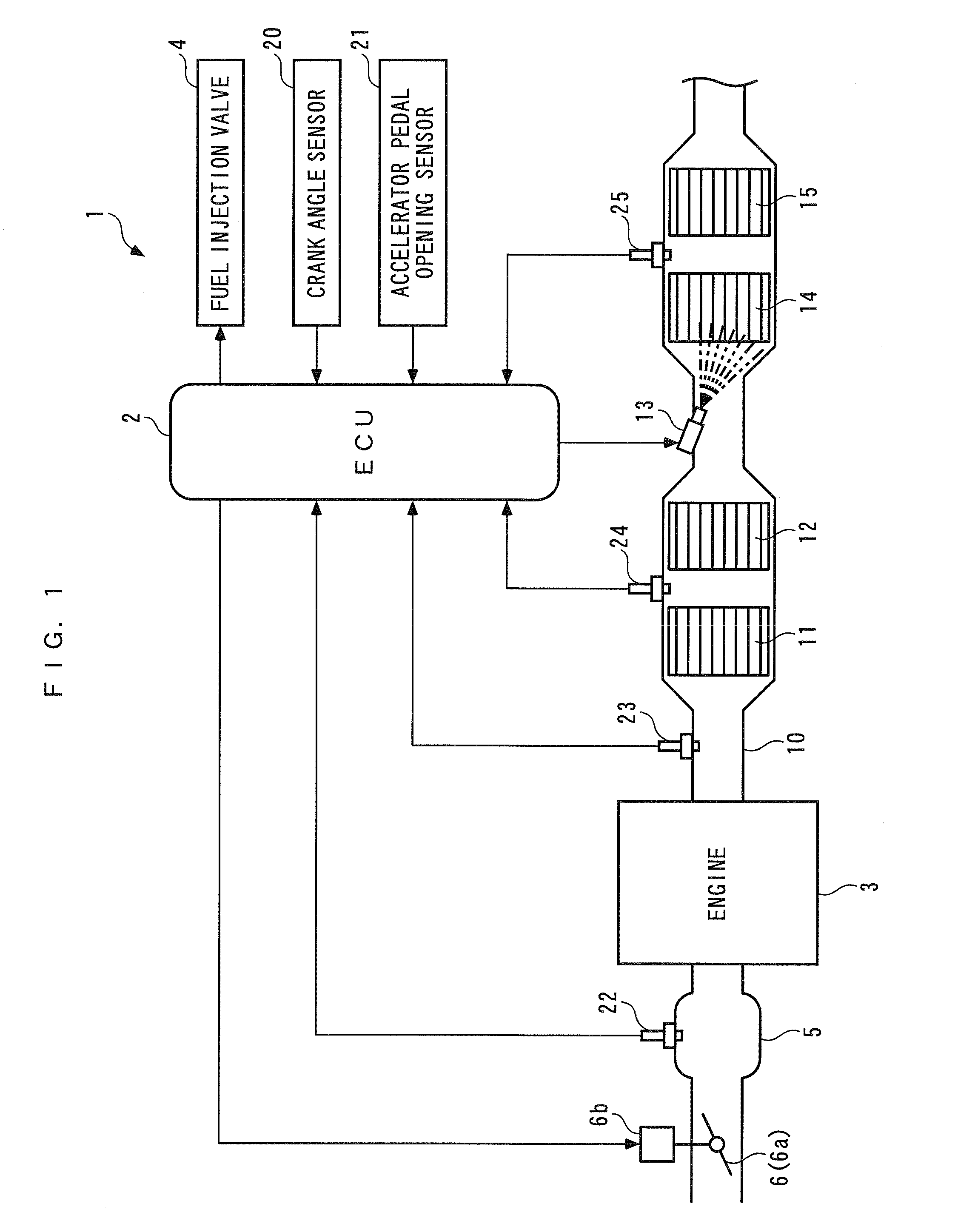Control apparatus
a control apparatus and control technology, applied in adaptive control, program control, instruments, etc., can solve the problem of not meeting the restraint condition and identifying the model parameters accurately, so as to improve the control accuracy and stability, and accurately identify the model parameters.
- Summary
- Abstract
- Description
- Claims
- Application Information
AI Technical Summary
Benefits of technology
Problems solved by technology
Method used
Image
Examples
first embodiment
[0105]Hereafter, a control apparatus according to the invention will be described with reference to drawings. The control apparatus according to the present embodiment, denoted by reference numeral 1 as illustrated in FIG. 1, controls the air-fuel ratio of an air-fuel mixture supplied to an internal combustion engine (hereinafter simply referred to as the “engine”) 3, and includes an ECU 2.
[0106]The engine 3 is a direct injection gasoline engine installed on a vehicle, not shown, and includes fuel injection valves 4 (only one of which is shown) provided for respective cylinders. Each fuel injection valve 4 is electrically connected to the ECU 2, and a valve-opening time period and a valve-opening timing thereof are controlled by the ECU 2, whereby fuel injection control is performed. In this case, under normal operating conditions, the fuel injection control is executed such that the air-fuel ratio of the air-fuel mixture is controlled to a leaner value than the stoichiometric air-f...
second embodiment
[0350]According to the control apparatus 1A of the second embodiment, configured as described above, the onboard identifier 260 identifies the model parameter vector θ, i.e. the two model parameters δ and α with the identification algorithm expressed by the equations (74) to (86), as described above. In this case, the model parameter vector θ is calculated by adding the total sum of the products Wai·dθi of the four weight function values Wai (i=1 to 4) and the four modification term vectors dθi to the reference model parameter vector θbs, so that the reference model parameter vector θbs is used as an initial value of the model parameter vector θ at a time when the identification computation is started. In addition to this, the reference model parameter αbs is calculated by searching the FIG. 10 map according to the exhaust gas volume Vex having a high correlation with the first-order lag characteristic between the air-fuel ratio correction coefficient KAF and the detected equivalent...
fifth embodiment
[0460]As described hereinabove, according to the control apparatus 1D of the fifth embodiment, the onboard identifier 530 calculates the identified value αid″ of the model parameter α″ with the aforementioned identification algorithm expressed by the equations (112) to (124) using the equation (105) as the control target model. In this case, the identification algorithm expressed by the equations (112) to (124) is derived by the same method as the method used for deriving the identification algorithm for the above-described onboard identifier 60, and hence it is possible to accurately calculate the identified value αid″ of the model parameter α″ while satisfying the restraint condition between the two model parameters α″ and 1−α″ in the equation (105). Further, the control input Uact is calculated using the identified value αid″ identified as above, and hence it is possible to prevent a modeling error due to changes in the first-order lag characteristic caused by changes in the oil ...
PUM
 Login to View More
Login to View More Abstract
Description
Claims
Application Information
 Login to View More
Login to View More - R&D
- Intellectual Property
- Life Sciences
- Materials
- Tech Scout
- Unparalleled Data Quality
- Higher Quality Content
- 60% Fewer Hallucinations
Browse by: Latest US Patents, China's latest patents, Technical Efficacy Thesaurus, Application Domain, Technology Topic, Popular Technical Reports.
© 2025 PatSnap. All rights reserved.Legal|Privacy policy|Modern Slavery Act Transparency Statement|Sitemap|About US| Contact US: help@patsnap.com



